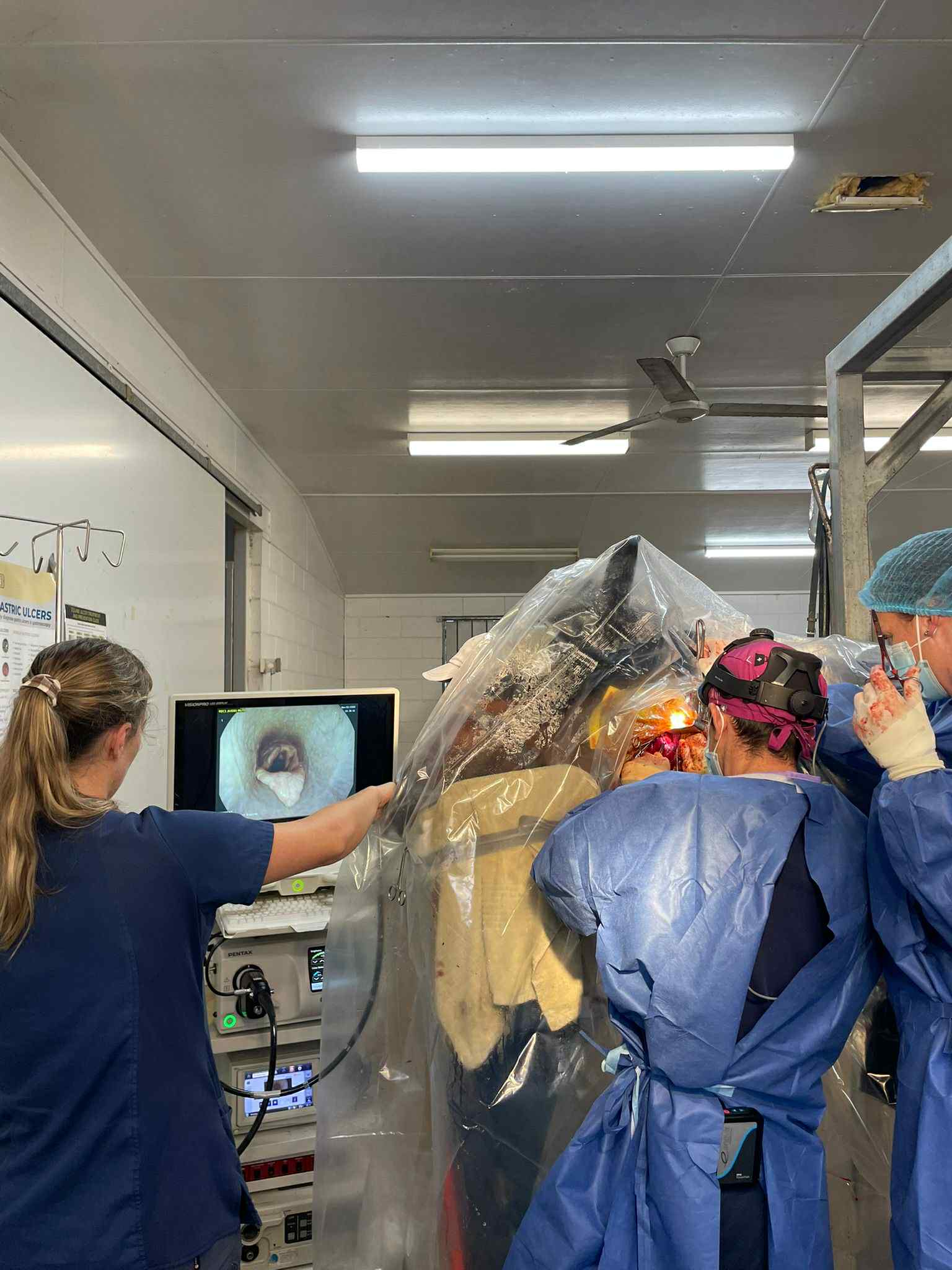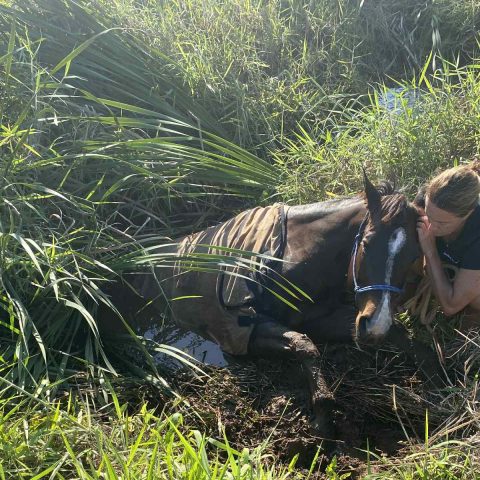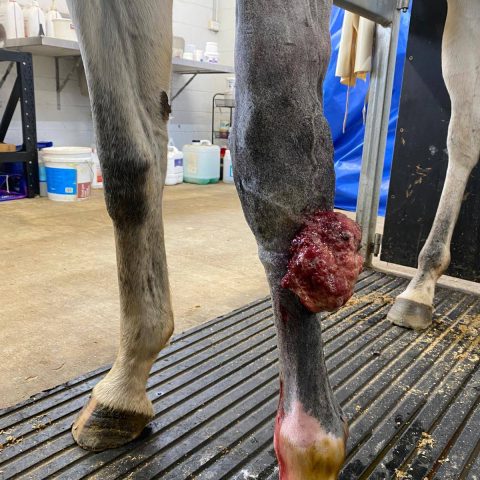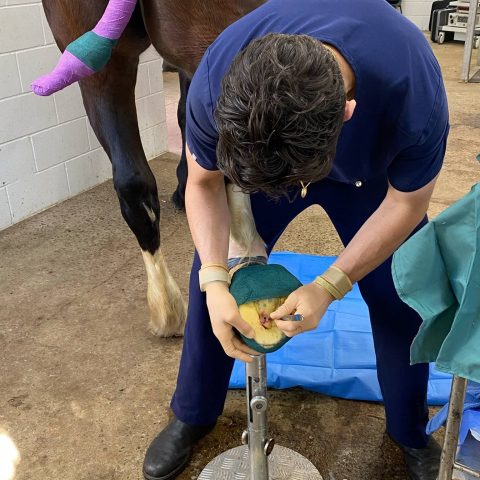Patient: Not disclosed
Breed/Type: Not disclosed
Presenting complaint: Recurrent laryngeal neuropathy (“roaring”)
Overview – What is Roaring?
Recurrent laryngeal neuropathy (commonly known as “roaring”) is a condition where the muscles that control one side of the horse’s larynx become paralysed. This prevents the airway from opening fully during exercise and can cause noisy breathing, reduced airflow, and poor performance.
The standard treatment is a laryngoplasty (also known as a tie-back), where the paralysed cartilage is surgically held open to restore airflow.
Traditionally, this surgery has been performed under general anaesthesia. However, it can now be done with the horse standing and sedated – a major step forward in equine airway surgery.
History: The horse presented with signs consistent with roaring, and was diagnosed with recurrent laryngeal neuropathy. A laryngoplasty was recommended to improve airflow during work.
Clinical Findings: Assessment confirmed laryngeal dysfunction requiring surgical intervention. The horse was a suitable candidate for standing surgery.
Management and Outcome: The tie-back procedure was performed with the horse standing under sedation. This allowed the surgical site to be accessed while the horse remained awake and calm, avoiding the need for general anaesthesia. Airway positioning was adjusted in real time for optimal surgical outcome.
Recovery was uneventful, and the horse returned to training more quickly than typically seen with traditional surgery under general anaesthetic.
Discussion: Standing laryngoplasty offers several key advantages:
- Avoids the risks of general anaesthesia
- Allows more accurate airway positioning
- Reduces recovery time, enabling a faster return to work
- While general anaesthesia may still be necessary for some horses, standing tie-back surgery is a game-changer for many.
Key Takeaway: Sunshine Coast Equine Veterinary Clinic offers standing upper airway surgery as a safer, more precise option for treating roaring. Speak to your vet about whether this approach may be suitable for your horse.




